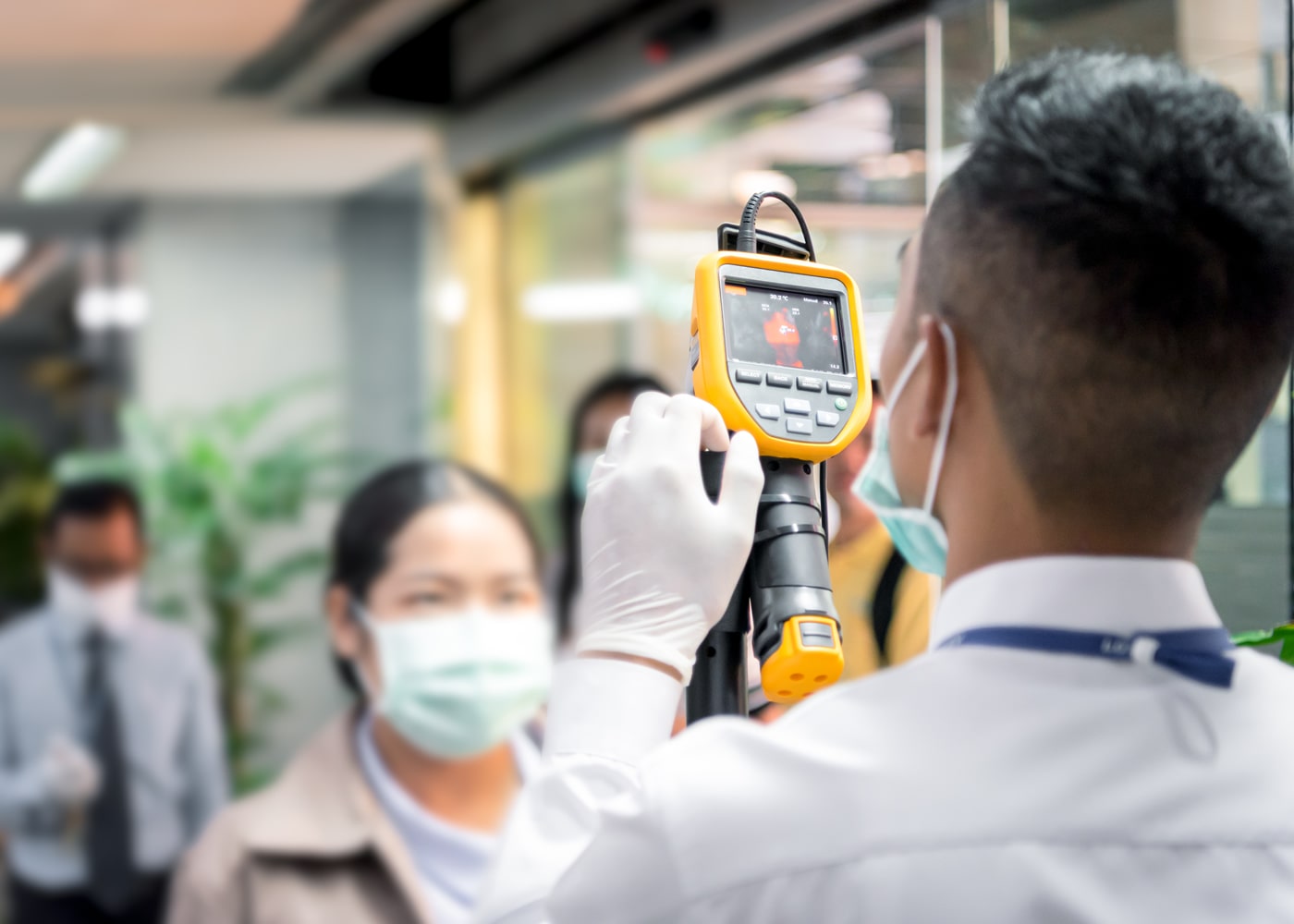Building People-Centric Solutions

Trends in EHS Tech
Selecting and integrating appropriate software and tech for your organization is foundational to effective EHS program management. NAEM’s 2020 research, “Trends in Emerging Tech for EHS&S: What’s Really Happening Inside Companies,” documented the state of emerging tech to help EHS leaders make informed decisions. As a follow-up, NAEM discussed emerging technology and software with experts at several leading firms.This article presents highlights from those discussions, including useful tips on selection and integration of emerging technology and use cases that shed light on the applicability of a wide range of technologies. By sharing the perspective of these technologists, we hope to provide additional tools to help EHS&S decision-makers evaluate the ever-evolving technology and software market.
Q&A Highlights
The following insights come from an in-depth discussion with Pamala Bobbitt, Vice President of Product Marketing at Cority — a leading EHSQ software and OHS software provider. Pamala is in charge of driving the go-to market strategy and product vision for the Cority's unified true Software as a Service (SaaS) platform. She has more than a decade of industry experience working with prominent EHS software vendors.Pamala began the discussion by pointing out that that the key to success is focusing on “a company’s most valuable asset — its employees. Therefore, the emerging technologies we are using mainly focus on providing more information to employees — enabling them to make more effective decisions and mitigate risk.” The theme of valuing employees was a constant throughout the Q&A session.
What emerging technologies does Cority currently offer or plan to offer in the future?
We are currently partnering with:
- Fatigue Science: The Fatigue Science ReadiBands measure fatigue and use machine learning to generate personal fatigue scores
- Highmark Interactive: Highmark Interactive’s EQ app gamifies a neurological assessment to determine if an employee is ‘fit for work’
- Interaptix: Leveraging augmented reality to identify hazards and mitigate risk
- Safety io, an MSA company: Connection with gas monitors and alerts
- Flyability: Drones to conduct remote inspections
Are there specific ways Cority is changing or evolving its IT offerings in light of these new technologies?
It’s important to have flexible integration — RESTful API. We are very focused on our mobility, visualization capabilities, and evaluating what data and information is most meaningful. We do not want to collect data for data’s sake.
What is your advice for companies hoping to integrate new technology with existing IT and EHS software systems?
- Make sure you have a specific use case in mind
- Do not try to capture all of the data
- Do not recreate alerts from the devices
- Use what the device has natively
What technologies do you see as the most broadly applicable and effective in the EHS and sustainability space?
Any wearable technologies related to identifying hazards or providing additional, situational information for safety ‘in the NOW’. Let’s use data from Fatigue Science and Highmark Interactive as an example here. When JHAs are done, it’s in an “ideal world” situation. With data on mental fitness and fatigue, those elements can be factored into the risk evaluation. If someone is distracted or tired, the probability would increase in that moment and may push the risk rating to a higher level, exceeding acceptable level. You could thereby help protect workers by putting those employees on less risky tasks.
Building Algorithms to Improve Employee Safety in Transportation
Cority worked with a large customer in the transportation industry to connect Telemetry data in vehicles. To do so, Cority’s in-house data scientist created algorithms to identify behaviors that lead to incidents. This enabled the customer to create programs to support its drivers, which included new driver rest protocols.
Cority worked with a large customer in the transportation industry to connect Telemetry data in vehicles. To do so, Cority’s in-house data scientist created algorithms to identify behaviors that lead to incidents. This enabled the customer to create programs to support its drivers, which included new driver rest protocols.
What are you most excited about seeing the EHS field embrace and why?
Technology in general. EHS has lagged in adopting software into their business. I would hope that this would help people run, not walk, in adopting any software to bring value to programs and promote better business outcomes.
Do you steer companies away from any particular types of technologies?
If technology is helping improve your program, you should use it. The only thing we would warn against is to make sure you can get data out in a useful and easy way. For instance, long ago many people used Lotus Notes for their EHS management system. Great to get data in but getting data out? Not easy. SharePoint is similar. You can configure it to house your programs and collect data but reporting or trending is very difficult.
Why?
EHS is a valuable department in any company and has a significant impact on a company’s performance. If EHS is not able to show data, learn from it and improve, it is difficult to communicate that value.
Streamlining Waste Removal With Drones
Cority worked with an oil & gas company to use drones to help identify when waste pick-ups were needed. This decreased the number of stops and pickups and reduced their costs significantly.
Cority worked with an oil & gas company to use drones to help identify when waste pick-ups were needed. This decreased the number of stops and pickups and reduced their costs significantly.
How do you help EHS leaders make the cases for adopting emerging technology?
We help leaders understand how the latest technology can translate to value and how to have these conversations with your internal stakeholders to communicate that value in a way that they understand. In our ebook, Mastering the Art of Communication for EHS Professionals: Your Guide to Breaking Down Language Barriers Across Business Units, we outline exactly how EHS practitioners can go about framing these conversations with the C-suite and other stakeholders.
What do you think are the most compelling reasons companies should think hard about investing in these new technologies?
To improve their programs, generate operational efficiencies and drive better business outcomes. Most importantly, ensuring the safety and well-being of employees in changing environments.
Trends in Emerging Tech for EHS&S
Smart sensors, drones, mobile applications and more are all revolutionizing EHS&S data collection, program design and operations in real time. Based on quantitative benchmarking data and insights from EHS&S technology leaders, this report documents which emerging technologies are really being adopted and why, and how companies budget for new tech and software. Download the report today at naem.org/tech-trends.
Smart sensors, drones, mobile applications and more are all revolutionizing EHS&S data collection, program design and operations in real time. Based on quantitative benchmarking data and insights from EHS&S technology leaders, this report documents which emerging technologies are really being adopted and why, and how companies budget for new tech and software. Download the report today at naem.org/tech-trends.
About the Expert
 Pamala Bobbitt is Vice President of Product Marketing at Cority, where she is in charge of driving the go-to market strategy and product vision for the company’s unified
true Software as a Service (SaaS) platform. Pamala began her career as a field chemist specializing in hazardous waste management before becoming an EHS Manager for a leading automotive supplier. After spending over 15 years as an EHS professional in
progressive roles across the pharmaceutical, chemical, and automotive industries, she leveraged her deep regulatory compliance expertise and passion for technology and entered the EHS software industry. Pamala has over a decade of industry experience
working with prominent EHS software vendors, helping enterprises map complex business processes into successful technology programs that drive measurable outcomes.
Pamala Bobbitt is Vice President of Product Marketing at Cority, where she is in charge of driving the go-to market strategy and product vision for the company’s unified
true Software as a Service (SaaS) platform. Pamala began her career as a field chemist specializing in hazardous waste management before becoming an EHS Manager for a leading automotive supplier. After spending over 15 years as an EHS professional in
progressive roles across the pharmaceutical, chemical, and automotive industries, she leveraged her deep regulatory compliance expertise and passion for technology and entered the EHS software industry. Pamala has over a decade of industry experience
working with prominent EHS software vendors, helping enterprises map complex business processes into successful technology programs that drive measurable outcomes.This article is produced by NAEM and sponsored by Cority. The opinions and perspectives disclosed in this article should not be viewed as an endorsement by NAEM.
About the Author

Sean Mason
ISS | Institutional Shareholder Services




